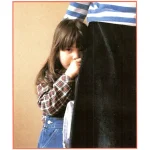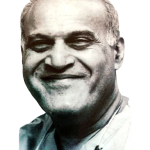
I was privileged to meet and interview the renowned Indian film playback singer Lata Mangeshkar on her first trip to Dubai in December 1982. She has been at the centre of the Indian film music scene for over seven decades. In 1959, Time Magazine did a first cover story on her. She had, by then, sung 20,000 songs. In December 1982, it was estimated she must have rendered over 30,000 lyrics, some of which are almost immortal. One of ardent fans said her voice is almost like divine manifestation. How else could she have achieved such heights in music?
To come face-to-face with such talent and genius can sometimes be a shattering experience – shattering because often enough the reality does not live up to the image created. This was not so in my meeting with Lata Mangeshkar – more than anything else, it is the humility of the artiste that comes to the forefront. Humility and a depth in perfection, which is what must have carried her forward all these years. No amount of perseverance is too great to achieve perfection and learning in any sphere, including music. It is a continuous process.
How did she get into singing live background songs when her initial interest was in classical music? “My father, Master Deenanath was a famous classical singer and he taught me classical music. His sudden death brought me into the film industry and I started my career as a child star because I was the bread earner for my family. After 1947, I started playback singing.”
The range of her appeal is such that she can sing to a child of five and to an old man of ninety and identify herself with her audience with equal ease.
How does she achieve such versatility? “When I sing, I always find out for whom and to whom I am going to sing and then I am completely involved in the song. Maybe that is the reason for the effectiveness and popularity of my music.”
Lata would not acknowledge which music director appealed to her most. But when I asked her if it was true that she had refused to take money for a song because she enjoyed singing it so much, she replied, “When I see a new upcoming music directors or producers who need encouragement, then I ask for minimal fees or maybe no fees because I want to help the young musician. And, you know, there are many song writers and music directors who come forward and it is important for the experienced singers to help them.”
Why had Lata never married? Was it because she devoted so much time to her professional singing that she had not considered marriage? She would not be caught in the net. Marriage was a question she never discussed; it was too private.
Lata has sung with many male singers, ‘Did she feel that Mohammed Rafi had the best voice but Mukesh the best way of delivering a song?’ “I think every singer has his own singing style and I always enjoy singing with all my colleagues.”
She has often been referred to as ‘the Nightingale of India’. She has projected her country in almost every large city of the world. What would she say is the new trend among music directors in the Indian film world? “The modern trend is more westernised and I cannot become involved with this new style. Old film music is still popular because people still like traditional music and lyrics”.
Did a good lyric affect her singing of a song? “A song,”, she said, “is made up of tune, words and the singer – all three have to be good to make mature and excellent music,” she adds, with a half-smile playing on her lips.
As a member of her entourage said, “The music director will wait six months and delay the release of his film for Lata to give time to record the playback music. In the long run, it is worth his while because Lata will enter the studio, study the lyrics, hear the tune and render the song perfectly. It is this perfection for which she is now famous, that will make not only her song excel but the film with it.”
Was it the film ‘Barsaat’ produced in 1949-50 that brought her to the threshold of her career? “The film with which I got my first break was ‘Majboor’ (1948) and the music director was the late Ghulam Haider. He was a great music exponent of his time and he spent a lot of time teaching me before he gave me a chance in his film.”
Who were her heroes? Was it true that Nat King Cole and K.L. Saigal are two professionals that she admired most? Lata answered, “My favourite singers in light music are Saigal, Abdul Wahab, Umm Kulthum, Fairuz and Nat King Cole”.
Which is her most favourite song among the thousands she has rendered? An unfair question, perhaps, as it is difficult for a singer of her calibre to have a favourite song. “I was once asked to make a list of my ten favourites. No sooner had I done so and it was published, I felt I had left this song out and what about that one. It is impossible to choose for me but I have always enjoyed my non-film recordings especially Meera Bhajans, Bhagwad Gita and Ghalib’s Ghazals. These are songs I sing when I come home tired – they give me another kind of pleasure. The songs I sing in privacy I enjoy the most.”
Over the years, the late Dubai-based photographer Noor Ali’s famous lens had caught Lata Mangeshkar in many moods and with many of her friends. Lata planned her first concert in Dubai in the early 1980’s and thereafter came to spent time in Dubai to get to know the country and its people which included many of her admirers. “She loved being here”, said Noor Ali, “after the first visit in 1982, she followed it with another concert in 1986; she often comes here just to rest”. He added that Lata had good relations with the Rulers of Dubai and admired the way they had developed the city. “As a person”, Noor Ali said, “Lata had very simple habits and needs. The charm of Dubai for her was that she felt it was home.”





Beautiful, a true legend.